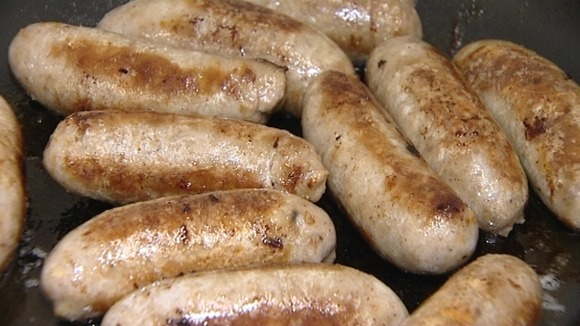 |
Part of Battle of Britain flight displaying at Duxford
as seen on Queens Diamond Jubilee |
Air Spectacular's annual appearance!
In my part of Suffolk the appearance of vintage aircraft in the sky over Haverhill used to signal the beginning of the annual Duxford air display at
Imperial War Museum aerodrome. As
Stansted Airport has expanded the flight corridors have become more restricted. The free displays I used to see as a child in our back garden from the Red Arrows, as they lined themselves up with old
Colne Valley Railway remanant of which still exists, are sadly not possible. We still see the odd vintage Spitfire and Hurricane flying below the air corridor but only on rare occasions.
Haverhill being just on the edge of the East Anglian "high" plateau had a number of airbases around it. Some were RAF and some later American. Fighters from the RAF were based at Castle Camps. Light bombers and Heavy Bombers at Wratting Common, USAAF at Ridgewell. This was all in the space of 4 to 5 miles from the town. Apparently the dance halls (there were two on the High Street) could be interesting places on Saturday night when other personnel including the Army were billeted in town!
Surrounded by all the bases, Haverhill had a relatively "quiet war" considering the potential targets. In March 1941 a Dornier bomber did make an appearance.
A passage taken from the book "Haverhill's Home Front" Compiled by
The Haverhill and District Local History Group and Roy Brazier.
Some Haverhill residents still remember this attack, including a lady who had just stepped
out of her bath, and looked out of the window to see the aircraft sweeping low over the rooftops towards her, and she saw plainly the pilot looking down. I wonder if he recalls seeing the lady, and did he report back when reaching his home base that the English people were very short on clothing? The lady straight away ran, downstairs to tell what she had seen, before realising she was still without clothes. "...It was when I was with Mrs. Marsh at Duddery Road that a German 'plane came over very low and started to machine gun houses in our area and down to Meetings Walk, hitting our attic and a brick wall that divides Duddery and Mount Roads. An incendiary bullet struck a wooden post leaving scorch marks ... "
Meetings Walk is of interest to me as until recently I had lived there for 12 years. An 1896 Victorian terrace built from local bricks, whose clay was dug apparently by the Haverhill Brick Company at the top of the terrace!
 |
Meetings Walk with Old Independent Church, at the
top of the spire is a Cockerel! |
At the back of the houses an access road allows occupants to park car in their garages and on property. This is an innovation that had not been thought of at that time the houses were built. At the top of the road
Travel and transport, however, at this time was not a problem. Haverhill boasted two railway stations. One serving the line going North to Cambridge and thence all points "globally". The other servicing the South line along the Colne and Stour valleys.
 |
| Meeting Walk in Winter |
Haverhill was an important town for clothes manufacture. During the Second World War Haverhill company
Gurteen was involved in the manufacture of uniforms. So there is a good chance that the uniforms featured in
Parades End currently on TV (
IMb entry) were made in Haverhill. In fact the Church featured in the photograph was built by the Gurteen family as were a lot the houses (except Meeting Walk) in the area. Gurteen is a company still going and involved in the town, occupying the Chauntry Mills (at present the home for the
Centre for Computing History) that has a working steam engine!
During the wartime the diet of the local workers was restricted to rationing. Allotments did feature as a necessary supplement to many peoples diet (something that may make a comeback). Again a piece from the "
Haverhill's Home Front"
"... we were issued with Ration Books but as my four boys were only little they did not eat much so we had a bit extra for the grown-ups. Our allotment gave us plenty to eat. One favourite meal I made was with onions and potatoes put in layers and served up with brown sauce, that was a 'no meat' meal. Meat was kept in a little meat safe, usually made of wood with a wire mesh front. No fridge or freezer about then ... "
Imported nuts such as Almonds were restricted in their availability and use. Almond essence, a emulsion of bitter almond extract and alcohol) started to be part of the dessert menu. There were even mock
almond pastes that ingenuity and Ministry of Food nutritionists concocted. Before the import of chocolate Almonds were an important sweet meat in Europe. Probably the Second World War where chocolate became a luxury rationed item probably drove the Almond out of the larder since there was a greater sugar hit! American influences post 1942 may have had also an impact!
A local recipe for Almonds Ipswich Almond Pudding would have been one of the casualties of the ration book. Maybe time to revise the use of the Almond in this country!
Ingredients (to serve 4)
1/2 pint (250 ml) milk
5 fluid oz (150 ml) double cream
2 oz (50 g) fresh white breadcrumbs, finely grated
3 oz (75 g) sugar
6 oz (150 g) ground almonds
1 teaspoon (25 ml) orange flower water or rose water
3 eggs, beaten
1 oz (25 g) butter
Step 1: Heat oven to 350°F or 190C.
Step 2: Warm the milk and cream together in a saucepan. Put the breadcrumbs into a bowl, then add the milk/cream mixture and leave to stand for approx 5 minutes.
Step 3: Add the sugar, ground almonds and orange water or rose water and leave to stand for a further 10 minutes until all the liquid has been absorbed.
Step 4: Stir in the eggs, blending well. Pour the mixture into a buttered 2 pint (1 litre) pie dish. Dot the
surface with the butter. Set the pie dish in a roasting tin. Pour boiling water into the tin until it comes about a quarter of the way up the side of the pie dish.
Step 5: Bake for 30 minutes.
Serve accompanied by single cream.
I will continue to collect a range of Suffolk Recipes and use of food and vegetables! Next up should be a blogpost on local ciders, ancient and modern!















